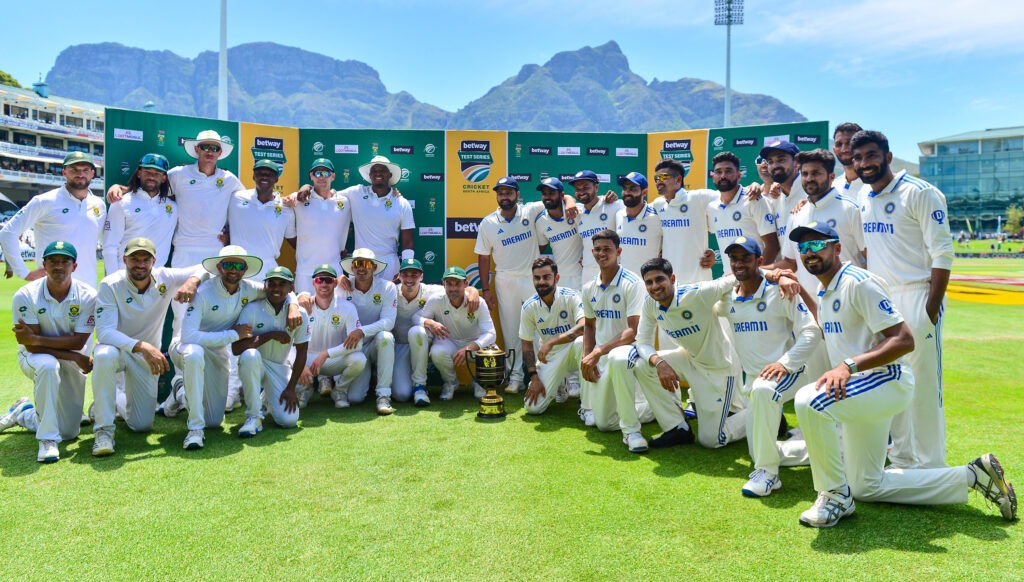
Standout overseas wins are a rarity in the history of Indian cricket. Newlands 2024 is a significant addition to this small exclusive club. As we savour the win, here are my top eight overseas wins since India started playing Test cricket in June 1932. This feature will be run in two parts, with the second to be published on January 7.
Beating England at the Oval 1971 – India won the series 1-0
With a record of 15 defeats in 19 Tests at the ground going into the match, Ajit Wadekar’s team needed something extraordinary to happen to change the poor track record at The Oval. This was more so after England had managed a 71-run first-innings lead and looked in firm control of the contest.
After that, it was the Bhagwat Chandrasekhar show.
Dicky Rutnagur aptly summed up Chandra’s impact. ‘Batting again, they (England) were put to flight in a matter of only two-and-a-half hours. The havoc was wrought by Bhagwat Subramaniam Chandrasekhar who, in a spell of 18.1 overs, captured six wickets for only 38 runs.’
The job, however, wasn’t done yet. India still had to score 173 runs for victory. The nerves multiplied when John Snow got Sunil Gavaskar out lbw for a duck early in India’s second innings. With India’s best batsman out, the captain had to play one of the most important knocks of his career to set up the run chase.
Though Wadekar was run out at the start of the fifth day, his conviction hadn’t wavered and he immediately went to sleep in the dressing room. And it was only after India had won that he was woken up by Ken Barrington with the news that the Indian summer was a reality.
The victory against England against all odds in 1971 was the best ever in the history of Indian cricket. It was a full-strength England team playing at home and widely acknowledged as the best in the world.
Headingley, 2002
Down 0-1, Sourav Ganguly, the captain, tried a gamble at Headingley. He was prompted by the belief that India’s strength was spin bowling both at home and overseas, and he played both Harbhajan Singh and Anil Kumble in tandem on a green wicket. Playing two spinners prompted him to bat first on a grassy pitch, a decision that would give his spinners a crack at England in the second innings. It was aggressive captaincy and a departure from what Indian captains were used to doing on foreign soil.
‘I must tell you Ian Botham looked at me with disbelief at the toss when I announced my decision to bat first,’ recalled Ganguly. ‘He couldn’t come to terms with the decision! Thankfully for me, Rahul [Dravid] played exceptionally well and then both Sachin Tendulkar and I followed up with hundreds to bat England out of the game. Each of the bowlers then did the job for us, with Anil and Harbhajan sharing eleven wickets between them. This win will always rank as one of our best wins in England.’
Adelaide, 2003
India’s four-wicket victory in Adelaide in 2003 involved one of the finest fightbacks of all time. Australia had ended the first day at 400-5 and there was every reason for India to feel deflated and, perhaps, give up. However, they refused to succumb to the pressure and, instead, came back firing on all cylinders the next day. Every player in the team believed they were game for the challenge and even after the Australians had scored 556, their shoulders did not drop.
‘This was our series to stand up and be counted,’ says Deep Dasgupta, who was a part of the squad in 2003-4. ‘Whatever the Australians got, we knew we could get more. Yes, I wasn’t playing but that did not mean I was not involved. Every member of the touring party was involved. It was a collective effort and the win in Adelaide will always be among my best memories as a Test cricketer.’
Dravid, the architect of the victory, played the match of his life scoring 233 and an unbeaten 72. On the bowling front, it was Ajit Agarkar who turned in figures of 6-41 to deliver the telling blows on the fourth day.
Also Read: India-Pakistan T20 World Cup 2024 Game in New York
Perth, 2008
Down 0-1, with Harbhajan Singh under fire for Monkeygate, this match was one of the most intense Tests ever played. Sheer brilliance from Dravid and Tendulkar in the Indian first innings meant Shaun Tait, brought into the Australian team, was rendered ineffective and India’s total of 330 was competitive. With RP Singh, Irfan Pathan and the young Ishant Sharma bowling with intensity, Australia were never allowed to bat with freedom. The real moment for India, however, came when captain Kumble got Symonds to edge to Dravid in the slips to pick up his 600th Test wicket. Kumble’s reaction said it all. With arms flayed in celebration, it was evident that he was a deeply satisfied captain and bowler.
Australia were bundled out for 212, handing India a commanding 118-run lead. Subsequently, when the Indians were bowled out for 294 in the second innings, thanks to a gritty 79 from VVS Laxman, Australia had a mammoth 400-plus score to chase down to win the match.
Ricky Ponting and Michael Hussey did put together a partnership and it took one of the best spells of fast bowling from an Indian speedster to break it. Ishant, playing only his fourth Test, breathed fire every time he came on to bowl and it was a treat to the eyes of every Indian supporter present in the stadium. Finally, it was RP Singh who bowled Tait to give India a memorable win. Delighted and relieved, the players let their guard down and the Indian dressing room was a sight to behold. Irfan, making a comeback to the team, was named Man of the Match for his all-round performance.
For More Sports News Click Here



